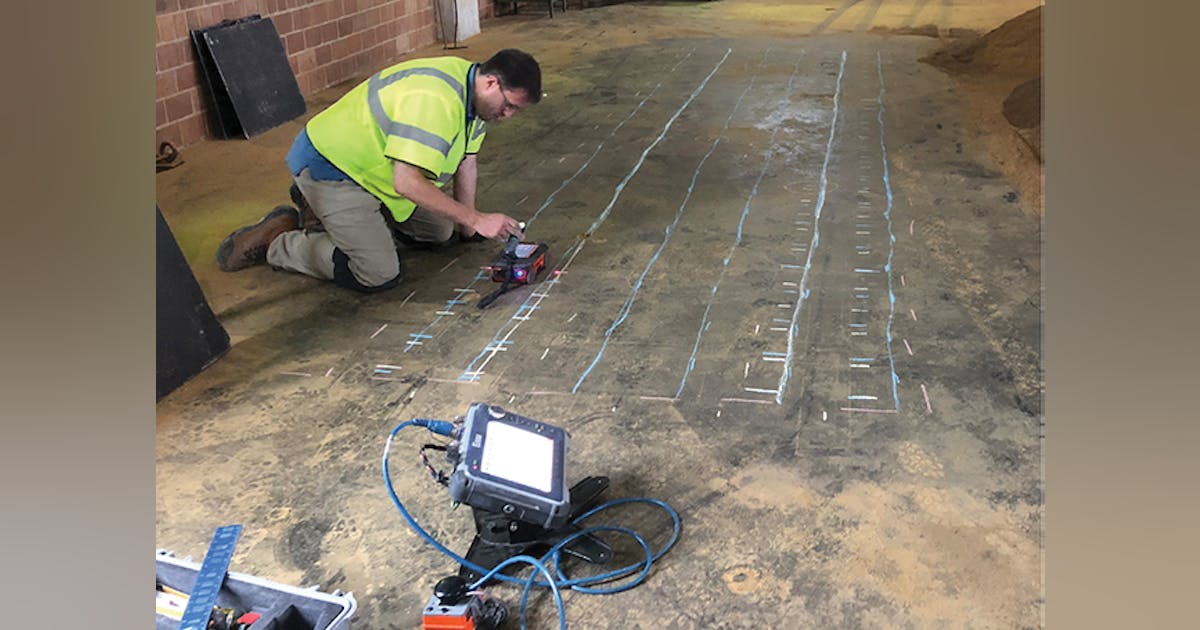Comprehensive Overview to Concrete Scanning Technologies
Comprehensive Overview to Concrete Scanning Technologies
Blog Article
Unveil the Transformative Power of Concrete Scanning in Making The Most Of Performance and Safety And Security
Concrete scanning has arised as an important device in the construction market, supplying unrivaled advantages in boosting job performance and ensuring safety and security requirements. The transformative power of concrete scanning lies in its capability to supply real-time data and detailed insights, changing just how tasks are intended and carried out.
Importance of Concrete Scanning
Ensuring the structural stability and safety and security of building and construction projects starts with the essential step of carrying out comprehensive concrete scanning. Concrete scanning is a non-destructive method made use of to identify and map subsurface aspects within concrete structures.
In addition, concrete scanning aids in optimizing project timelines and budget plan by avoiding unforeseen expenses and delays that may develop due to unpredicted obstructions within the concrete. Inevitably, investing in detailed concrete scanning is a positive strategy that boosts both efficiency and security in building and construction jobs.
Exactly How Concrete Scanning Works
Concrete scanning runs as an essential tool in building and construction projects by using advanced technologies to identify and map subsurface aspects without causing architectural damage. Ground Penetrating Radar (GPR) and Electromagnetic Induction (EMI) are 2 primary approaches utilized in concrete scanning. GPR works by releasing high-frequency radar pulses into the surface area, which get better when they run into subsurface things or spaces. The time considered the signal to return shows the deepness and place of the items. EMI, on the various other hand, utilizes electro-magnetic areas to determine variations in product make-ups, such as identifying rebar or channels within concrete frameworks.
Throughout the scanning procedure, the data gathered is assessed in real-time, enabling prompt identification of potential threats or challenges underneath the surface. By using these sophisticated modern technologies, concrete scanning considerably reduces the risk of costly damages and injuries on construction websites.
Benefits of Concrete Scanning
Utilizing advanced scanning modern technologies in building and construction projects offers a plethora of advantages, boosting both effectiveness and security on-site. One of the main benefits of concrete scanning is the ability to find and find embedded things such as rebar, post-tension wires, and avenues precisely. By identifying these elements prior to exploration or reducing into concrete structures, the risk of unintentional strikes is considerably decreased, stopping possible injuries to employees and damages to the structure itself. Concrete scanning helps in preparation and creating a lot more effectively, as it supplies specific information concerning the area and depth of structural parts.

Situation Researches: Concrete Scanning Success

In one more situation, a construction firm made use of 3D concrete scanning to evaluate the problem of aging concrete structures in a historic building. The thorough scans given useful insights right into the extent of degeneration and aided focus on upkeep initiatives efficiently. By proactively resolving locations of issue determined via scanning, the firm was able to extend the life expectancy of the framework and ensure passenger safety.
These case research studies emphasize the transformative power image source of concrete scanning in enhancing effectiveness, precision, and safety in building and construction jobs.
Applying Concrete Scanning in Projects
Applying innovative scanning innovations throughout construction projects has ended up being significantly important for improving precision and security. By incorporating concrete scanning right into project preparation and implementation, construction teams can determine possible threats, such as rebar or post-tension wires, concealed within concrete frameworks. This aggressive strategy reduces the risk of accidents, delays, and expensive rework, ultimately bring about more reliable job timelines and budgets.
To apply concrete scanning properly, job supervisors should collaborate very closely with skilled scanning specialists to figure out the most appropriate scanning strategies for the certain project needs. Involving scanning experts from the beginning of a project makes it possible for the Get More Info group to create thorough scanning strategies that deal with key locations of worry and guarantee extensive data collection.
Moreover, including concrete scanning into regular task workflows can simplify decision-making procedures, as real-time scan data supplies immediate understandings into the problem of concrete structures - Concrete Scanning. This data-driven strategy promotes notified problem-solving and makes it possible for groups to make adjustments promptly, cultivating a society of effectiveness and safety throughout the task lifecycle

Verdict
To conclude, concrete scanning plays a crucial role in boosting effectiveness and safety in building and construction jobs. By using innovative modern technology to map and spot out underlying structures within concrete, this procedure aids to avoid expensive errors, make certain structural stability, and decrease risks on site. With the ability to discover surprise elements and offer exact information, concrete scanning proves to be a useful device for optimizing job outcomes and making best use of general success.
Concrete scanning is a non-destructive technique utilized to identify and map subsurface elements within concrete frameworks. Additionally, concrete scanning aids in optimizing job timelines and spending plan by preventing unanticipated prices and hold-ups that may occur due to unanticipated obstructions within the concrete. One noteworthy situation research study involves a large-scale renovation task where concrete scanning played an important role in ensuring task success.In an additional instance, a building company utilized 3D concrete scanning to analyze the problem of aging concrete structures in a image source historical structure. By integrating concrete scanning into task planning and execution, construction groups can determine potential threats, such as rebar or post-tension wires, concealed within concrete structures.
Report this page